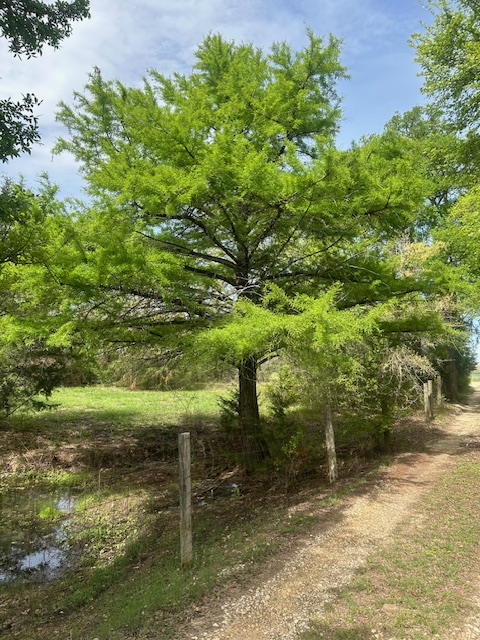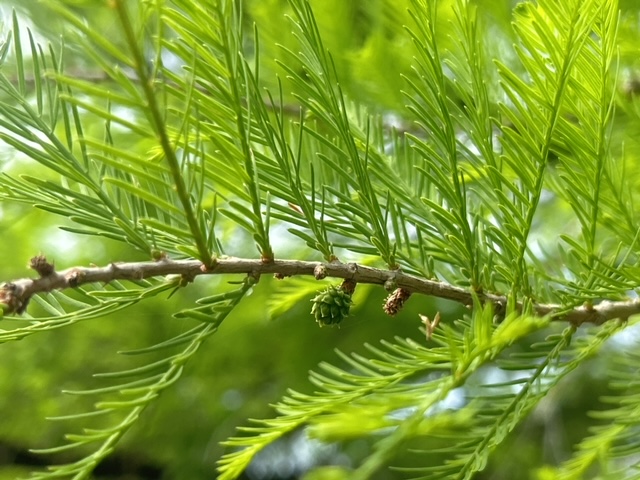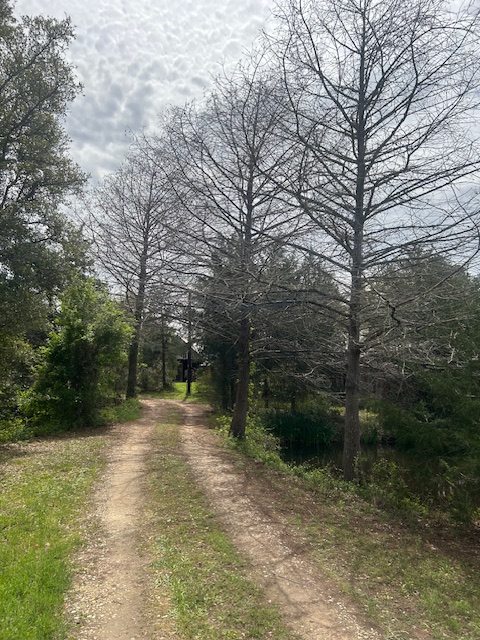by Alan E. Rudd
The oldest individual bald cypress tree (Taxodium distichum) in North America is likely to be one in North Carolina that has been aged by drilling a core to the center of its trunk to expose the number of annual rings. This specimen growing along the Black River is over 2600 years old and apparently still
looking mighty healthy.
The conifer family Cupressaceae, showed up in the fossil record over 200 million years ago. Bald cypress are modern North American members of this family that has over 130 species occurring across the northern hemisphere They traveled along as blocks of continental plates broke up and moved apart. Cypress trees in the Mediterranean look a good bit different than the bald cypress growing in our southern swamps and along riverside habitats in North America, but they are all related to those that lived on the super-continent Pangea.

In North America tree scientists agree that we have two distinct species, bald cypress and Montezuma cypress (Taxodium mucronatum). As with all taxonomists there is skepticism and disagreement. This involves yet another variety dubbed “pond cypress.” We will leave the bickering about pond cypress to the paid professionals.

I have both Montezuma and bald cypress around my pond and have watched them develop differently for years. I observed my bald cypress in Burleson County to be flowering in late January. These trees have male catkins that are about 2 inches long which emerge from the end of last years twigs. Just below those pollen-emitting catkins are small female flower parts that resemble tiny pine cones. The amazing thing to me is that these delicate flowers bloom when it is almost a dead certainty that several hard freezes will arrive before spring. Across North America and as far north as Delaware bald cypress are shown to flower in January. Here in Texas the flowers are exposed for as much as 7 weeks before any new leaves begin to erupt in March.

Contrast that with a Montezuma cypress located on the same pond 70 feet away. It sprouted leaves in early February and is in full-green glory on the same day that my bald cypress trees are still leafless. Montezuma cypress is the National Tree of the Republic of Mexico. In central Mexico and further south these trees never lose their leaves. The one in my yard holds it leaves much later in fall than the bald cypress, but eventually does drop them after hard freezes around Christmas each year. Burleson County, Texas isn’t Mexico City, but these trees have the ability to be either evergreen or deciduous.

It has always fascinated me that bald cypress are present in abundance along swampy acidic streams
in East Texas and yet also along calcareous, alkaline streams in the Texas Hill Country. It is an adaptable plant that can thrive in both pH 4.5 or pH 9.5. I wonder if at one time in the past they extended completely across the south, through Texas and down into Mexico as a solid band? Maybe while we let the tree taxonomists argue we can imagine a scene in deep time when things looked very different on the continent now known as North America. This ancient lineage of trees has survived a roller coaster of changes and thrived during “ice-box earth” and in times when tropical warmth dominated the across the Arctic Circle.

These cypress trees are tough organisms.
